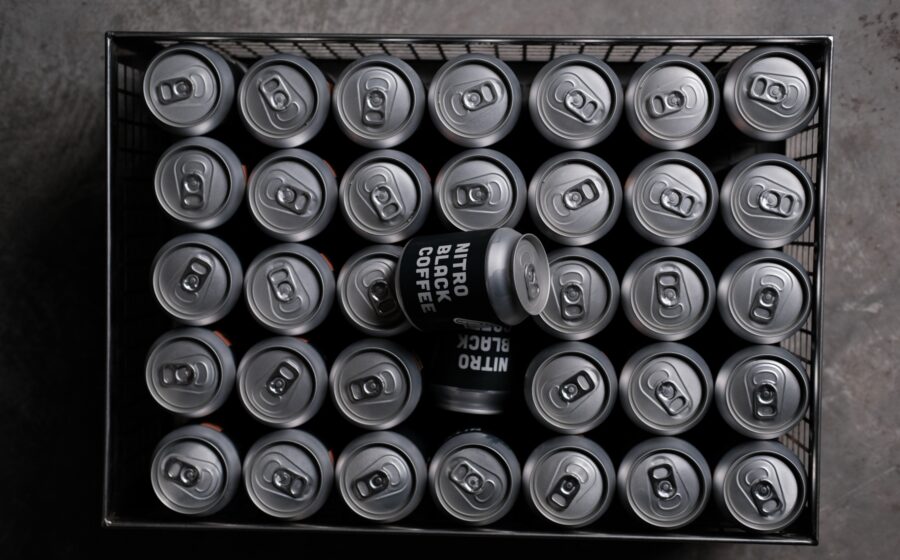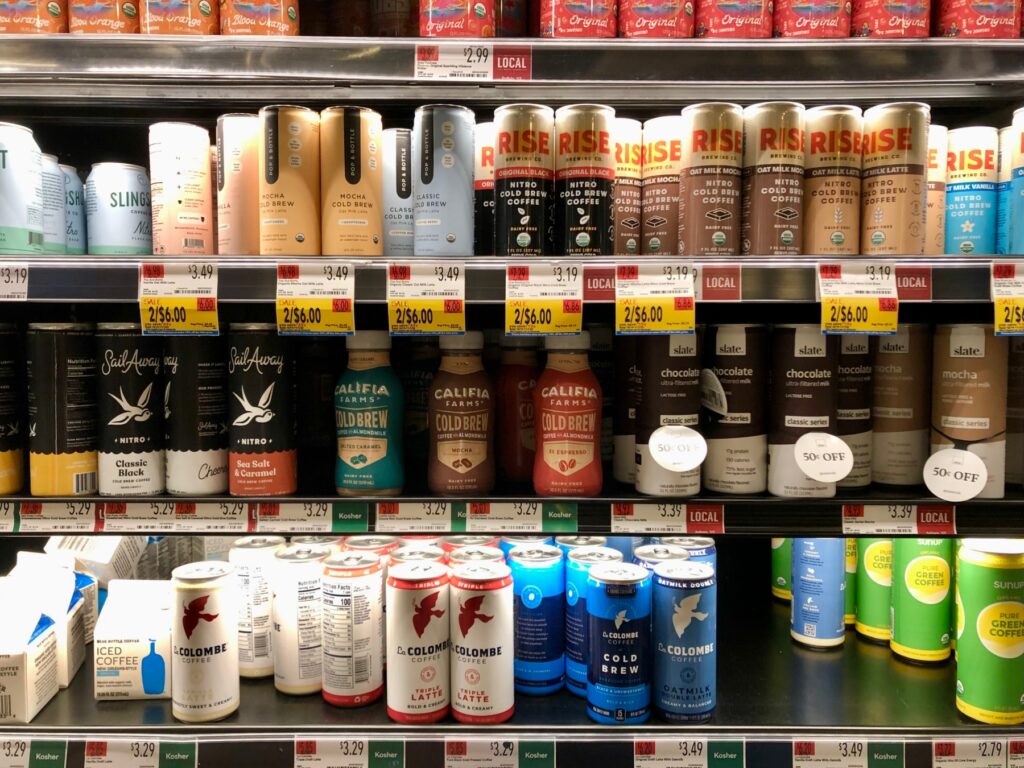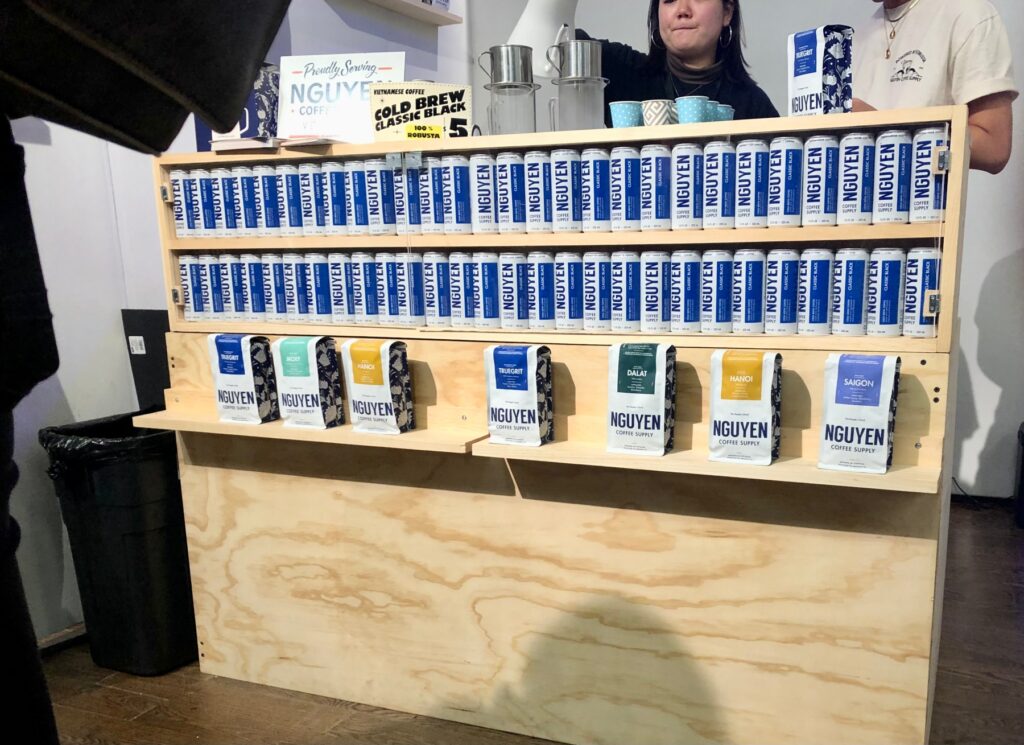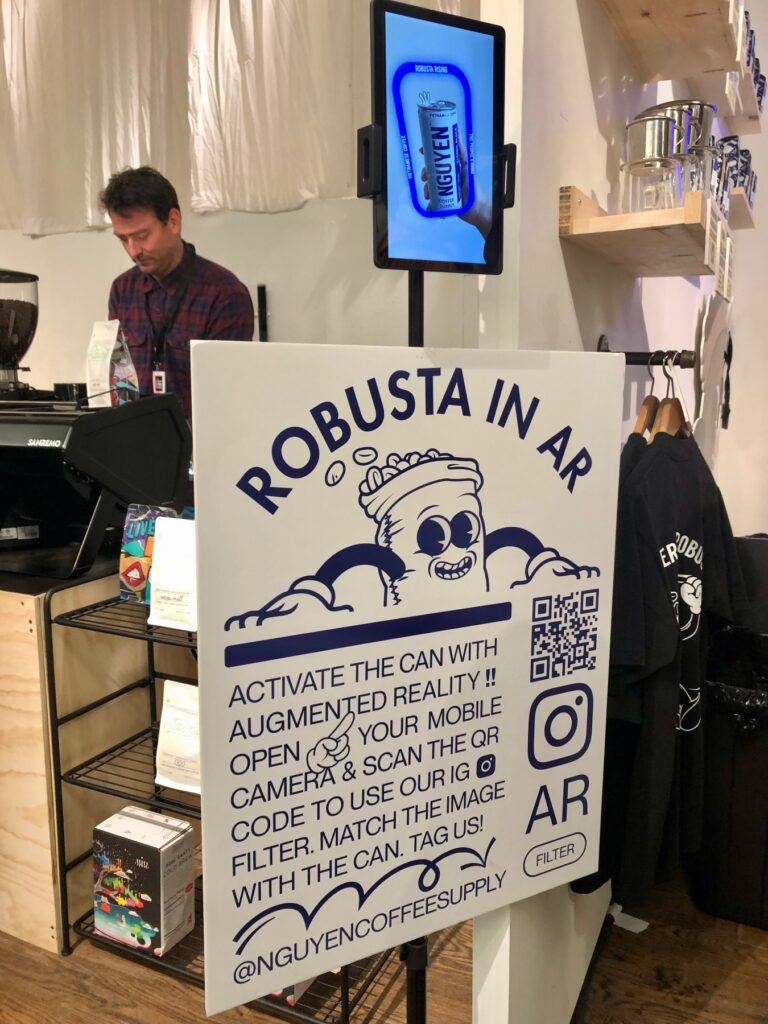“Free canned cold brew? Count me in!” I thought as I passed a barista in Madison Square Park handing out samples of a newly-launched ready-to-drink coffee beverage. I grabbed one flavor, my dad and sister grabbed another, and we walked through the bustling streets of the Flatiron District of New York City, eager to dig into our newly-acquired caffeinated drinks.
We stopped to pop the cans, took a sip…and were underwhelmed. The acidity I’d expect from a balanced cold brew drink was acrid and tasted more like the malt used to brew beer, and the flavor cut out quickly. Without balance, the drink tasted a bit flat.
But here’s the thing: Canned cold brew, among other cold RTD coffee beverages, has seen massive growth in the last few years. The global RTD tea and coffee market generated $86,821.90 million in 2021, nearly four times its 2019 valuation of $22.44 billion.
But as I looked down at this disappointing drink, I wondered: “Does anyone even like canned cold brew?” Digging deeper into the explosive growth of RTD coffee drinks, I decided to explore why, from convenience to accessibility to sheer marketing prowess, RTD coffee has grown in popularity—and who is stepping beyond the hype to debut new and innovative canned coffee drinks.
The Consumer Buzz on RTD
My experience with the Madison Square freebie isn’t the only reason I remain skeptical of RTD coffees: I’ve never met a coffee RTD I really loved. But my attraction to new things—novelties and colorful can art—means I make hopeful attempts at trying new canned coffee drinks at regular intervals.
Though the reasons people share for buying RTDs vary, they center around a desire for expediency, novelty, and consistency. “If you’re too tired or lazy in the morning or afternoon, it’s very convenient,” says Kareen Jarrett, a project manager and occasional consumer of RTD beverages. “I am able to have a coffee without having to do the process of preparing one.”
“I enjoy the ability to try different brands on a whim,” says Karen Koehler, a senior marketing manager. But Koehler also points out that RTD beverages are predictable—canned beverages don’t fluctuate in flavor, unlike handmade drinks, which could taste slightly different from one shop to the next. “What appeals to me is knowing that I’m going to have the same experience, regardless of when or where I purchase.”
Leah Shearer, a senior account director, mostly drank RTDs as a teenager. “I only drink cream versions now,” she says. “Black versions are too bitter for my taste.”
No matter your persuasion, brands are capitalizing on an apparent market demand: “Premium, organic, ready-to-drink coffee is growing at a rate nearly 39% faster than packaged coffee,” Lavazza US CEO Davide Riboni said in a press release. “This is due in part to younger, American coffee drinkers’ preference for cold and iced coffees, which makes this market one of the most dynamic.”
D.C.-based research firm Vantage Market Research theorizes that the busy, fast-paced lifestyles of consumers globally contribute to the rapid growth of RTD beverages. Consumers are used to grabbing other canned items like carbonated sodas and energy drinks; it just so happens that RTD coffee is now the new source of “instantaneous energy,” according to Vantage’s reporting.
Sahra Nguyen is the founder of Nguyen Coffee Supply in New York City and just launched a 100% Vietnamese robusta Classic Black Cold Brew in August 2022. “The grab-and-go RTD speaks to convenience,” she says. “I hope [ours] reaches a larger audience who may not have the luxury, time, or leisure to go to work holding a [hot] coffee.”
For some, coffee RTDs are a middle ground between affordable and more expensive coffee options. Koehler mentioned she likes the “convenience, definitely convenience!” of RTDs, adding, “No more gas station coffee!”
But Shifa Kapadwala, who works in publishing, doesn’t see the reason for the hype. She goes for RTD coffee beverages “very rarely, since fresh coffee is almost always available in most places I go in NYC.”
Canning The Cold Brew Craze
Cold brew seems to be everywhere these days—including as the base of many coffee RTDs.
“The United States is becoming a cold brew nation,” the New York Times proclaimed back in the summer of 2017. There are no signs of this seemingly unparalleled consumer obsession slowing down. Today, cold drinks (a larger category of cold beverages sold at coffee shops, including cold brew) are sold year-round. As of 2022, nearly 75% of Starbucks sales are cold beverages.
In any other context, coffee gone cold wouldn’t be appetizing, yet cold brew continues to dominate despite other entrants in the RTD sector. The 2021 State of the Beverage Industry report showed RTD cold brew leads growth in the coffee beverage category.
But how do brands create an RTD that people enjoy?
When Nguyen set out to develop a cold brew RTD for Nguyen Coffee Supply, which sells specialty robusta coffee from small farms in Vietnam, she looked at the data generated by her website. Keyword analysis of the reviews on the site found the number one and two trending words were “flavor” and “smooth,” which led her to ask, “How do we get people to the flavor experience quicker?”
That led her team to taste nearly 40 RTD coffees on the US market. “I noticed many of the coffees were acidic or bitter or skewed sour, which isn’t my preference—I like coffees that are bold, nutty, and dark,” she says.
It took multiple rounds of development to get to the “aha” moment, but when they found it? “We were like, ‘Ooh, this is good!'” she recalls. “Oh my God, It’s so smooth!”
A New Access Point
While convenience culture influenced the meteoric rise of RTD coffee beverages, so did the proliferation of e-commerce during the COVID-19 pandemic.
With people mainly consuming coffee at home, the pandemic initially wiped out nearly a quarter of the revenue generated by branded (think big-name chains) coffee shops in the US. Though beloved neighborhood brick-and-mortar shops struggled to operate with restrictions on in-person visits, alternate ways of getting coffee—including online sales, in-app ordering for drive-through or delivery, and subscriptions—flourished.
People could also satiate their coffee needs by grabbing a chilled coffee beverage on grocery runs. Many RTD brands are available in local grocery stores or national chains, with brands like Stumptown and Blue Bottle available in places like Target and Whole Foods.
Thankfully, the coffee shop market has since recovered to 96% of its former value—though consumers still predominantly buy RTDs in supermarkets. For some specialty brands, however, the availability of RTDs outside of traditional coffee shops is a good way for regulars to show support in a changing landscape.
Central Coffee Co. in Charlotte, North Carolina, started selling RTD cold brew and bottled cold brew concentrate in March 2013 and saw colossal bulk sales of both products during the pandemic, according to co-owner Louisa Kleto.
“We saw a lot of our regular customers needing a grab-and-go option for work,” Kleto wrote in an email. “This way, our neighbors had something to stick in the fridge for early mornings, mid-afternoon pick-me-ups, or to take on a road trip.”
Now that more specialty brands are putting out RTDs, it’s not a stretch to imagine consumers loyal to a brand will continue supporting them through RTD drinks. Nguyen views RTD drinks as part of Nguyen Coffee Supply’s “natural growth trajectory.” Though the brand doesn’t yet have a physical shop, it recently became the first coffee importer and roaster to offer Vietnamese coffee beans at Whole Foods.
Nguyen also sees RTD drinks as a good entry point for non-coffee drinkers rather than superseding a type of coffee or drink. “We’re expanding the category, not looking to replace other products,” she says.
Although much of the research behind RTD drinks focuses on consumers, they can also shine a light on the people and ideas mainstream coffee brands often ignore. Bartholomew Jones and Renata Henderson are the founders of Cxffeeblack, a Memphis-based coffee company encouraging people to “love black people like you love black coffee.” Cxffeeblack sells six packs of Guji Mane, a snap chilled cold coffee made from a naturally-processed Ethiopian coffee and sourced through an all-Black supply chain, alongside whole bean offerings.
Jones voiced his desire to decolonize coffee in a 2021 interview with Memphis Commercial Appeal: “[I] feel like God has put us in a position to be able to help Black people reclaim our stolen destiny, coffee and potential for growth that was taken away from Black people,” he said. Henderson, the roaster behind Cxffeeblack, is the first Black female roaster in Memphis.
Nguyen, a first-generation Vietnamese-American founder, has championed inclusive marketing in the coffee industry, from hiring a roastery team that’s majority women to ensuring people of color are represented during product photoshoots. She’s also highlighting a coffee species that’s often passed over in the specialty coffee sector: robusta.
Nguyen Coffee Supply’s RTD coffee drink is made from 100% robusta beans, contrasting with the common framing of arabica as the leading quality vector. When tasting various RTDs on the market, Nguyen noted that 100% arabica “was always loudly proclaimed. “it was oftentimes never produced with robusta, and if it was partially robusta, it may or may not have been labeled as so. So we said, ‘Let’s create something we haven’t seen yet.'”
The resulting RTD was a product development risk they took as part of an attempt to build a more inclusive coffee industry. Even Nguyen herself had doubts: “Are people ready for this? Should we just do a robusta-majority blend?” Since releasing her drink, she’s received excellent consumer feedback and is hopeful it can serve as an example for further innovation.
The Staying Power of RTD
Free canned cold brew aside, I’ve indulged in my fair share of RTD coffee on the way to the checkout lane of the grocery store. And while some drinks have been a miss, RTD coffee beverages are still evolving.
Brands continue to experiment with different formats (cold brew cappuccinos and lattes), expanded flavor offerings (vanilla and mocha), and have begun to compete on metrics like caffeine content (“3X the caffeine”!) and the perception of a healthy choice (“jitter-less,” only 60 calories).
The market for these beverages is expected to be worth $117,685.71 million by 2028, smashing earlier estimates. If RTD coffee drinks continue growing at the predicted pace, canned cold brew will be around for a long time to come.
I may prefer the cortado from my local café, but RTD coffee drinks aren’t replacing or rendering handmade coffee drinks obsolete. Instead, they’re expanding coffee’s reach and making drinks more accessible to a broader and more diverse audience of caffeine consumers. In the long run, RTDs will help beloved coffee brands stay in business by bringing together people thirsty for cold coffee.
From NYC and based in Odense, Denmark, Chloé Skye Weiser is a celiac foodie and sustainability writer most likely to be found with a cortado in hand, dreaming about a world where circular thinking is the default and food waste is nonexistent.
Cover photo by Dannie Sorum. All other photos by Chloé Skye Weiser.

















